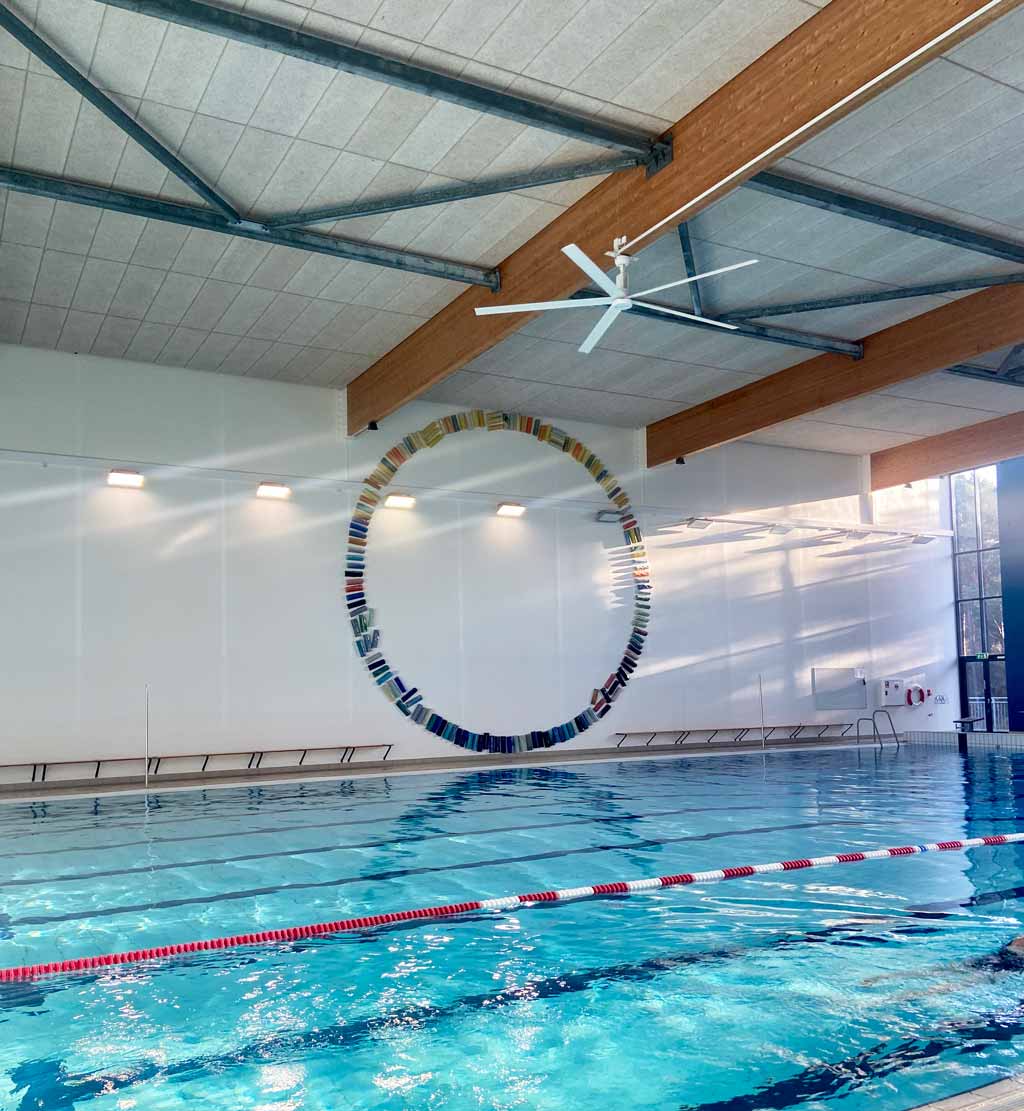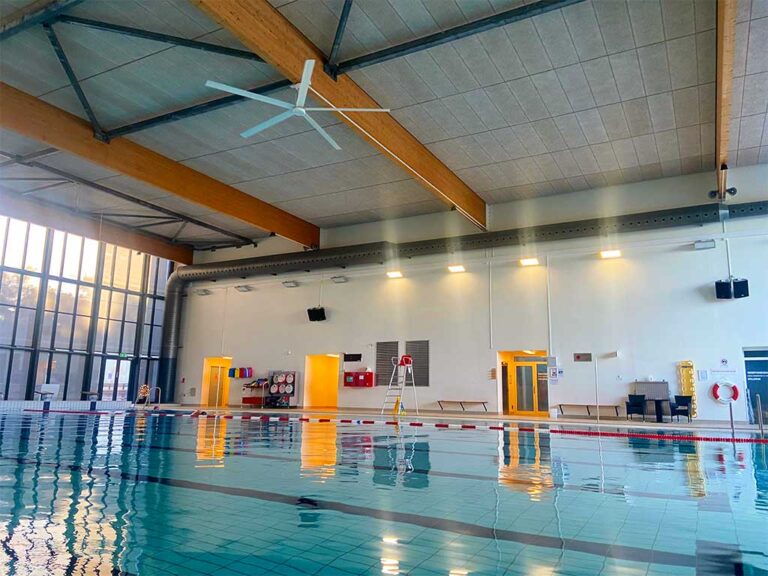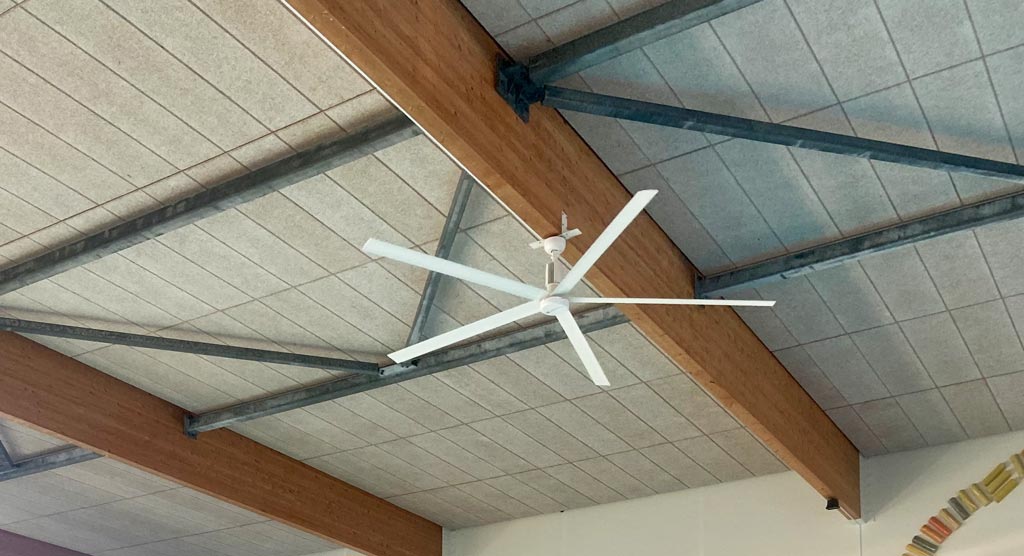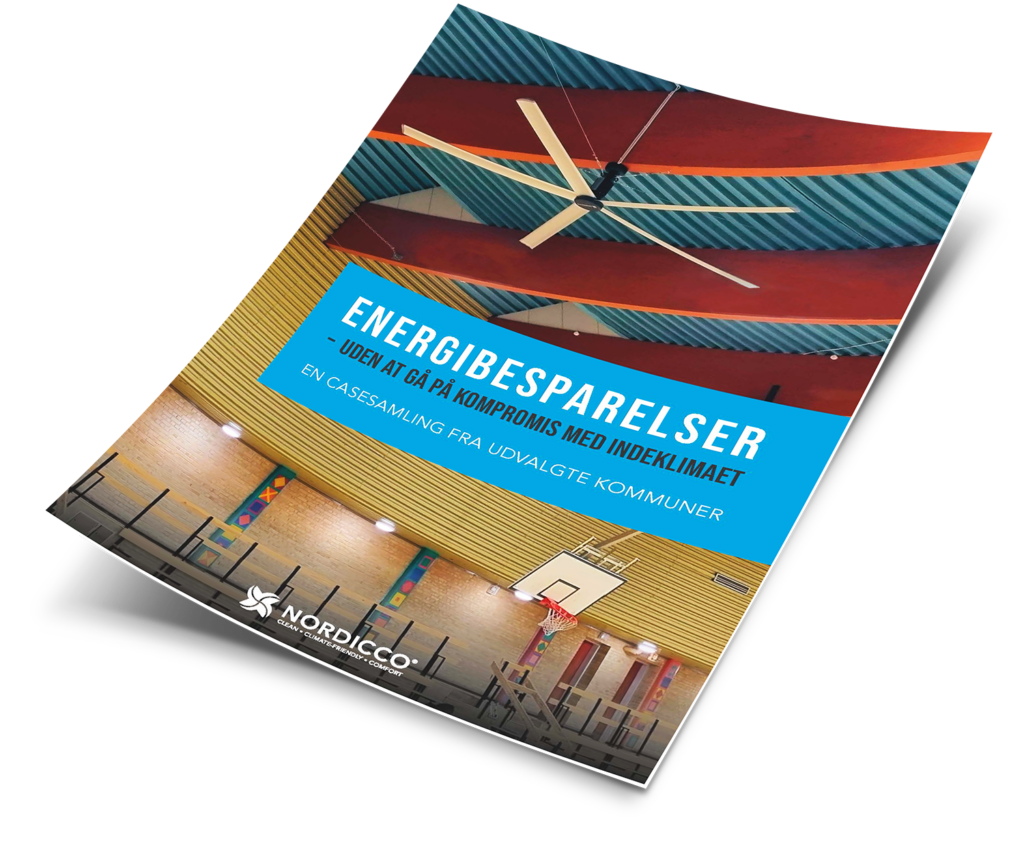
Like many other swimming pools and natatoriums, Grenaa Aquatic Center has had problems with high relative humidity and evaporation from the pools. This accelerates corrosion of the building structure and can also create a poor indoor climate with heavy air. An indoor environment which in turn can cause symptoms such as headaches for the many users and employees.
Fortunately, Grenaa Aquatic Center found the solution to this problem: the Northern Air® Aggressive Environment HVLS-fan. The installation process has been carried out in close collaboration with Lifeguard and Technical Manager Claus Nielsson, who has shared his views about the fan – watch the video interview below.
The Grenaa Aquatic Center offers a 25-meter-long pool with 8 lanes, a hot water pool, a bathing room as well as a children’s pool. The large basin is used for swimming lessons, competitions and rallies. And it is above this large pool that the ceiling fan is installed. The Aggressive Environment fan hangs just below the ceiling, so there’s no risk of it getting in the way of swimmers jumping from the diving board.

When it comes to indoor climate and air quality, swimming pools face several challenges. One of them concerns heavy air, which occurs due to the high relative humidity in the room. This experience of ‘heavy air’ leads to headaches. It also means that employees cannot stay in the room for many hours at a time. Another challenge arises in the form of THM substances and chlorine vapors that give the characteristic chlorine smell and the red eyes after a dip in the pool.
Grenaa Aquatic Center faced exactly the above-mentioned issues. Lifeguard and Technical Manager, Claus Nielsson, especially emphasizes that they wanted to get rid of the feeling of “sweat running down your back”. He also highlights that the lifeguards previously couldn’t spend more than 2 to 4 hours in a row in the swimming center before they experienced headaches and fatigue.
Shortly after installation, users and employees could feel a difference. The fan efficiently mixes the air and has reduced the relative humidity in the facility. The homogeneous mixing of the air layers provides a better indoor climate – without creating drafts.
And this is important, says Lifeguard and Technical Manager, Claus Nielsson: “It’s a swimming pool where people walk around in shorts and swimsuits. You must keep this in mind all the time. This also means, it can be a challenge to find the golden spot concerning the indoor climate.”
There are many indications that Aggressive Environment has helped Grenaa Aquatic Center well on its way to finding the golden spot. One of them is that they have nicknamed their new ceiling fan ‘the wonder’. After installation, the relative humidity has been lowered 6 percentage points – from 54% to 48%. This has significantly improved the indoor climate according to Claus Nielsson. This can be felt instantly, since the characteristic swimming pool smell of chlorine has been reduced (by homogenous mixing of the air across the room) and isn’t quite as piercing anymore.
In addition, the improved air has lifted the working environment. The heavy air has been combatted and doesn’t lead to headaches as often and you no longer have the feeling that sweat is driving down your back. This improvement in the indoor climate benefits swimmers and guests as well as lifeguards and other employees.
In the past, we had between 53-54% relative humidity. Now we’ve lowered it to 48%. This means you no longer have sweat driving down your back and the heavy air in the swimming pool is gone. It’s a nice light air that meets you in here.”
An Aquatics Center is a challenging environment. Especially when it comes to corrosion. The indoor climate is characterized by evaporation from the basin surface. These vapors also consist of chlorine vapors and THM (trihalomethanes) substances. Combined, these contribute to the heavy air and classic chlorine smell of indoor swimming pools. It can be summed up quite simply:
large pool surface + high water temperature + activity in the swimming pool = great evaporation that increases the relative humidity in the room
By lowering the relative humidity, the building’s lifetime is extended, as the structure and fixtures aren’t affected by moisture to the same extent. This can also reduce maintenance costs. It is not only economically beneficial, but undeniably also an environmentally friendly solution.
“Normally, we would increase energy use in order to improve the indoor climate. As soon as you turn up your energy consumption, it costs. Therefore, it is a good idea to install a fan as we have, because you can get the heat that rises towards the ceiling back down towards the basin. And we don’t have this cold feeling when you enter the swimming pool from the changing rooms any longer. Neither customers nor lifeguards have complained after we had the fan installed,” says Claus Nielsson.
Aggressive Environments can also help reduce energy consumption during winter by pushing the heat that would otherwise be trapped at ceiling level back down to the occupancy zone.


The Northern Air® Aggressive Environment fan can equalize temperature and humidity differences in a room through a continuous mixing of the air. FORCE Technology has tested the system and its resistance to water and dust. Overall, the system has an IP54 classification, which means it’s dustproof and can also withstand heavy water splashing. The classification makes Aggressive Environment particularly suitable for swimming pools and aquatics centres due to their challenging indoor environment. What’s more, the entire system, from brackets to air blades, is coated with a special coating. For more information and technical specifications for Aggressive Environment see the product page.
